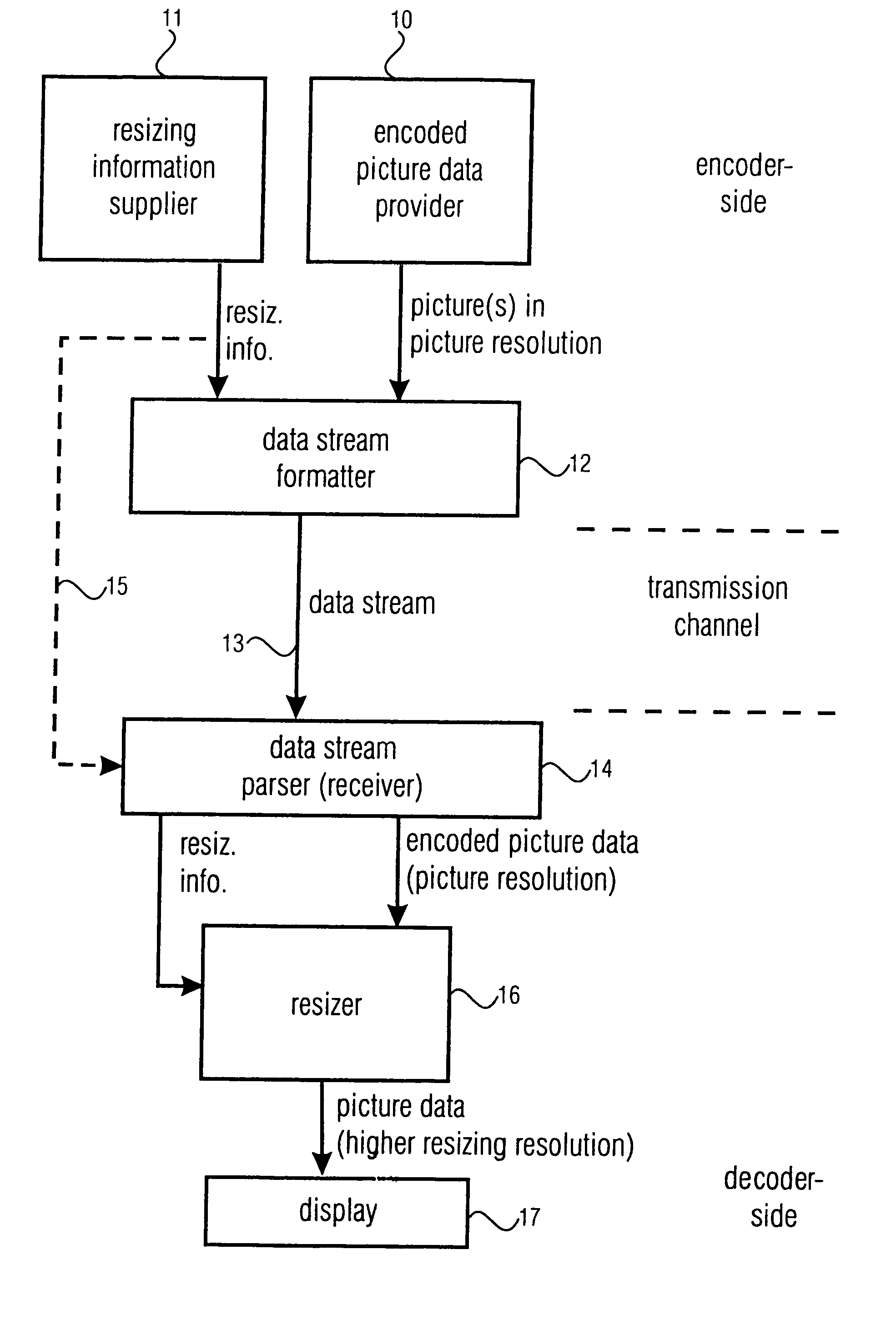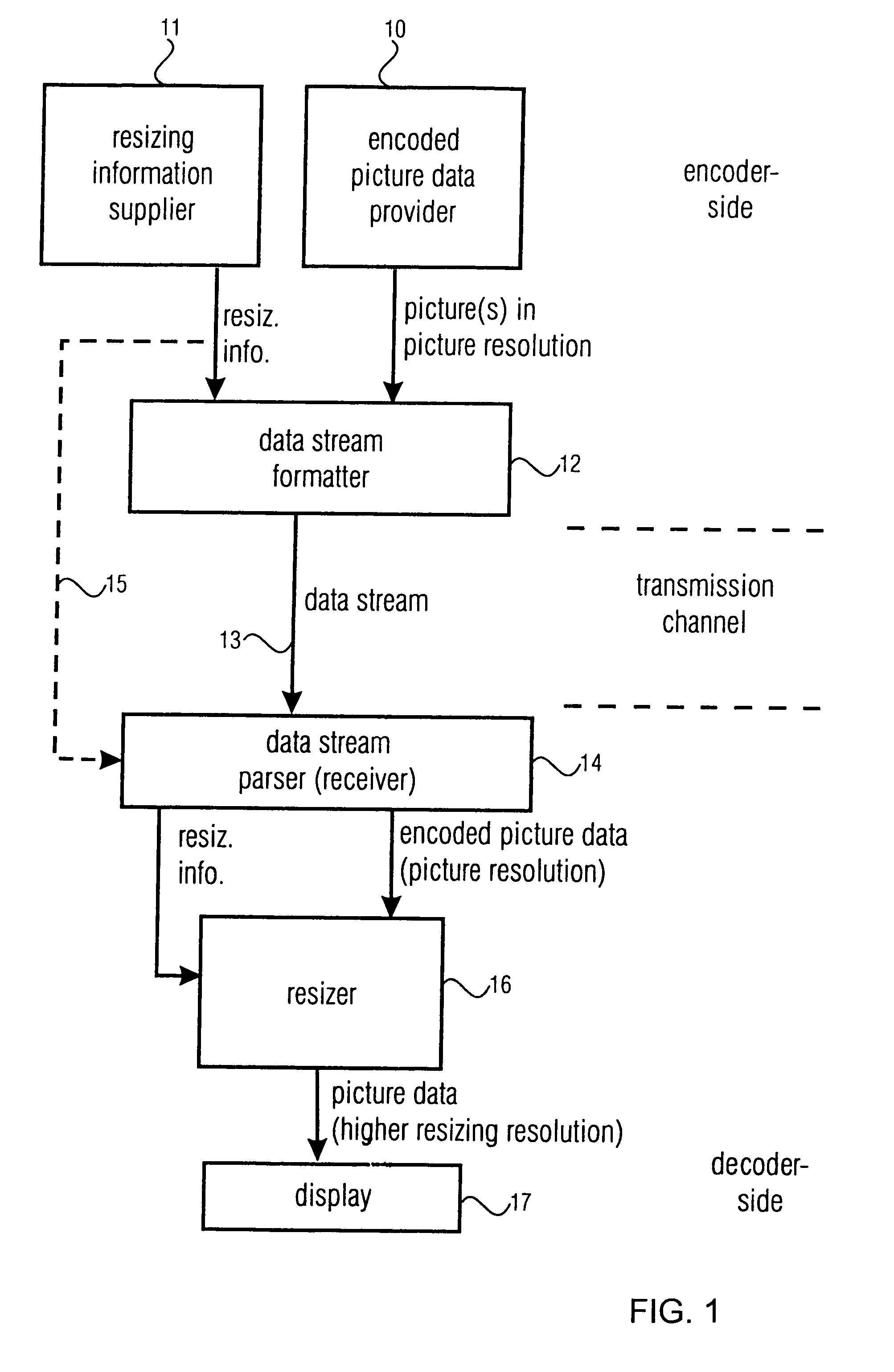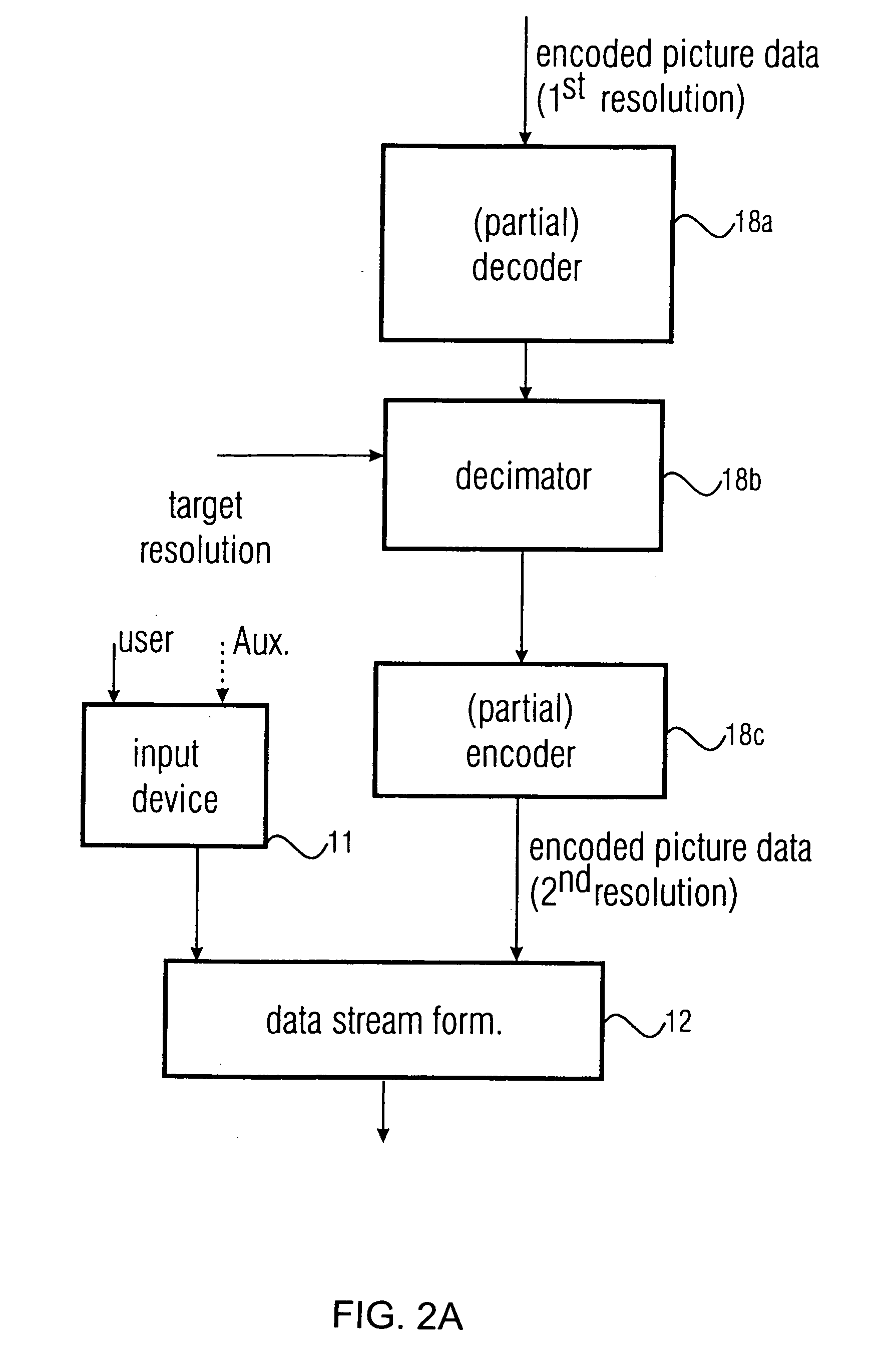Apparatus and method for producing a picture data stream and for processing a picture data stream
a picture data and apparatus technology, applied in the field of video encoding/decoding, can solve the problems of inability to transmit a picture b>30/b> over a certain bandwidth-limited channel, very accurate picture, and inability to encode a large number of pictures. , to achieve the effect of reducing picture resolution, and reducing the number of pictures
- Summary
- Abstract
- Description
- Claims
- Application Information
AI Technical Summary
Benefits of technology
Problems solved by technology
Method used
Image
Examples
Embodiment Construction
[0039] The system in FIG. 1 includes, on the encoder-side, a provider 10 for providing encoded picture data. A picture represented by the encoded picture data has a picture resolution defined by a number of pixels included in the picture. The picture in the picture resolution generated by the picture provider 10 can be, for example, picture 31 of FIG. 3. In accordance with the present invention, the apparatus for producing a data stream having encoded picture data representing a single picture or a plurality of pictures also includes a resizing information supplier 11. The resizing information supplier 11 is operative to supply resizing information. The resizing information define a resizing resolution of the picture, when replaying the picture, wherein the resizing resolution is higher than the picture resolution.
[0040] Preferably, the resizing information and the encoded picture data are input into a data stream formatter 12. The device 12 forms a data stream and transmits the da...
PUM
 Login to View More
Login to View More Abstract
Description
Claims
Application Information
 Login to View More
Login to View More - R&D
- Intellectual Property
- Life Sciences
- Materials
- Tech Scout
- Unparalleled Data Quality
- Higher Quality Content
- 60% Fewer Hallucinations
Browse by: Latest US Patents, China's latest patents, Technical Efficacy Thesaurus, Application Domain, Technology Topic, Popular Technical Reports.
© 2025 PatSnap. All rights reserved.Legal|Privacy policy|Modern Slavery Act Transparency Statement|Sitemap|About US| Contact US: help@patsnap.com



